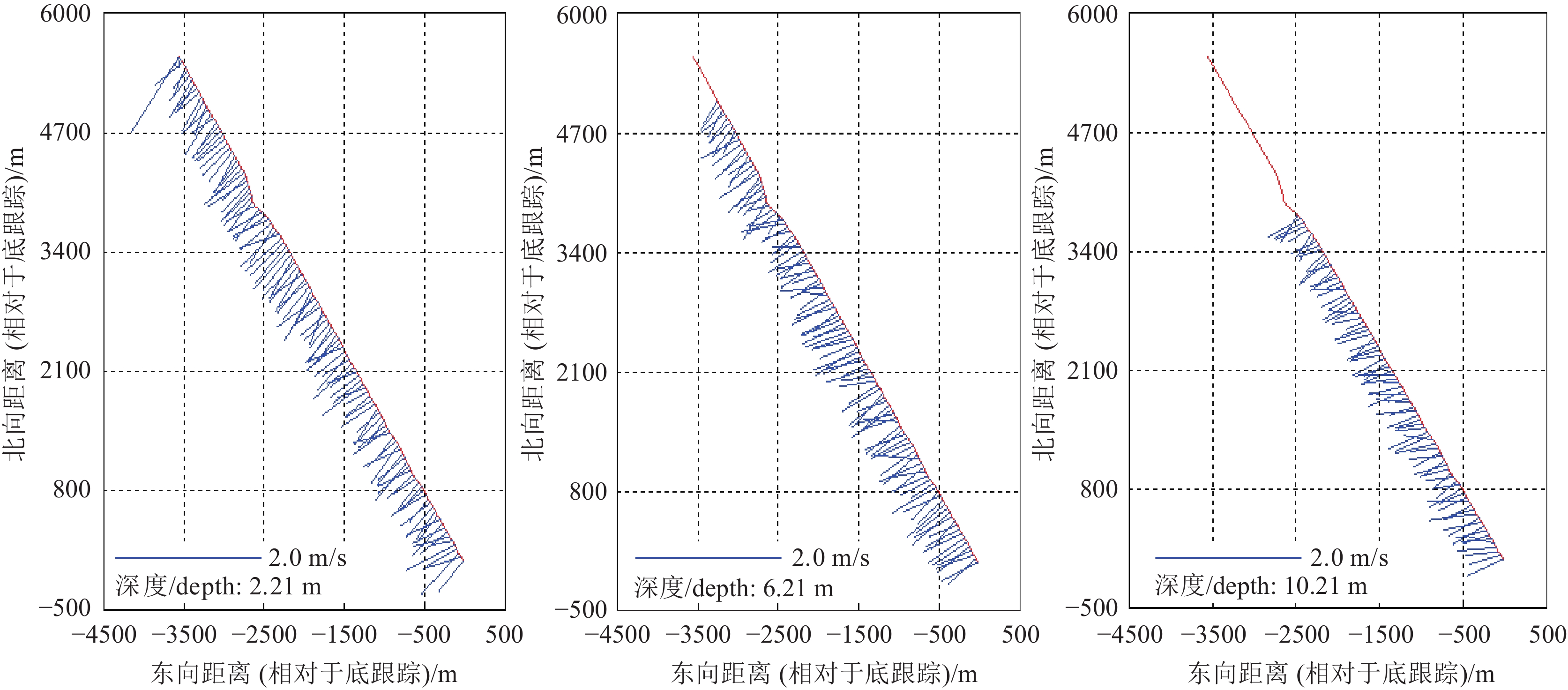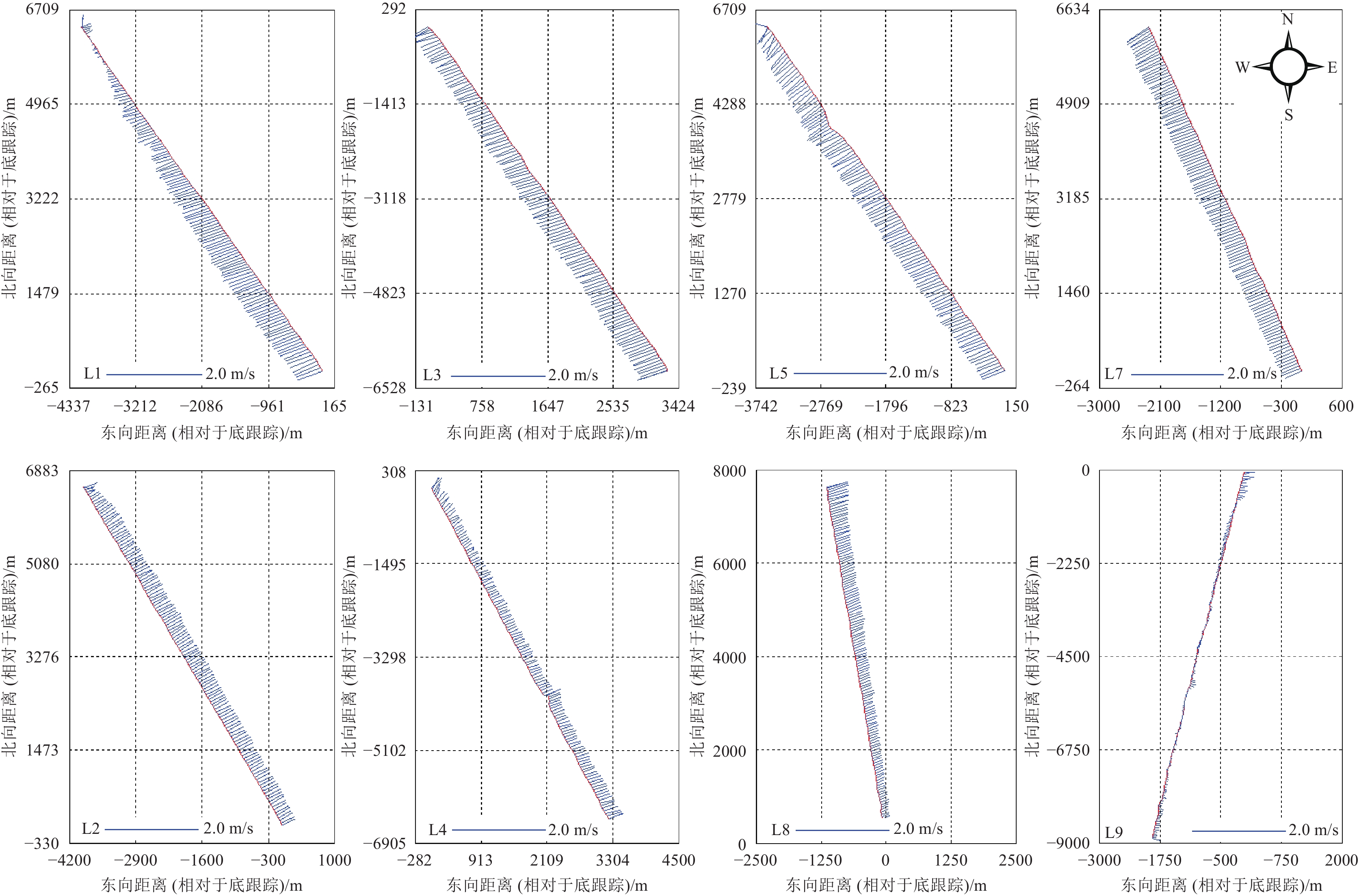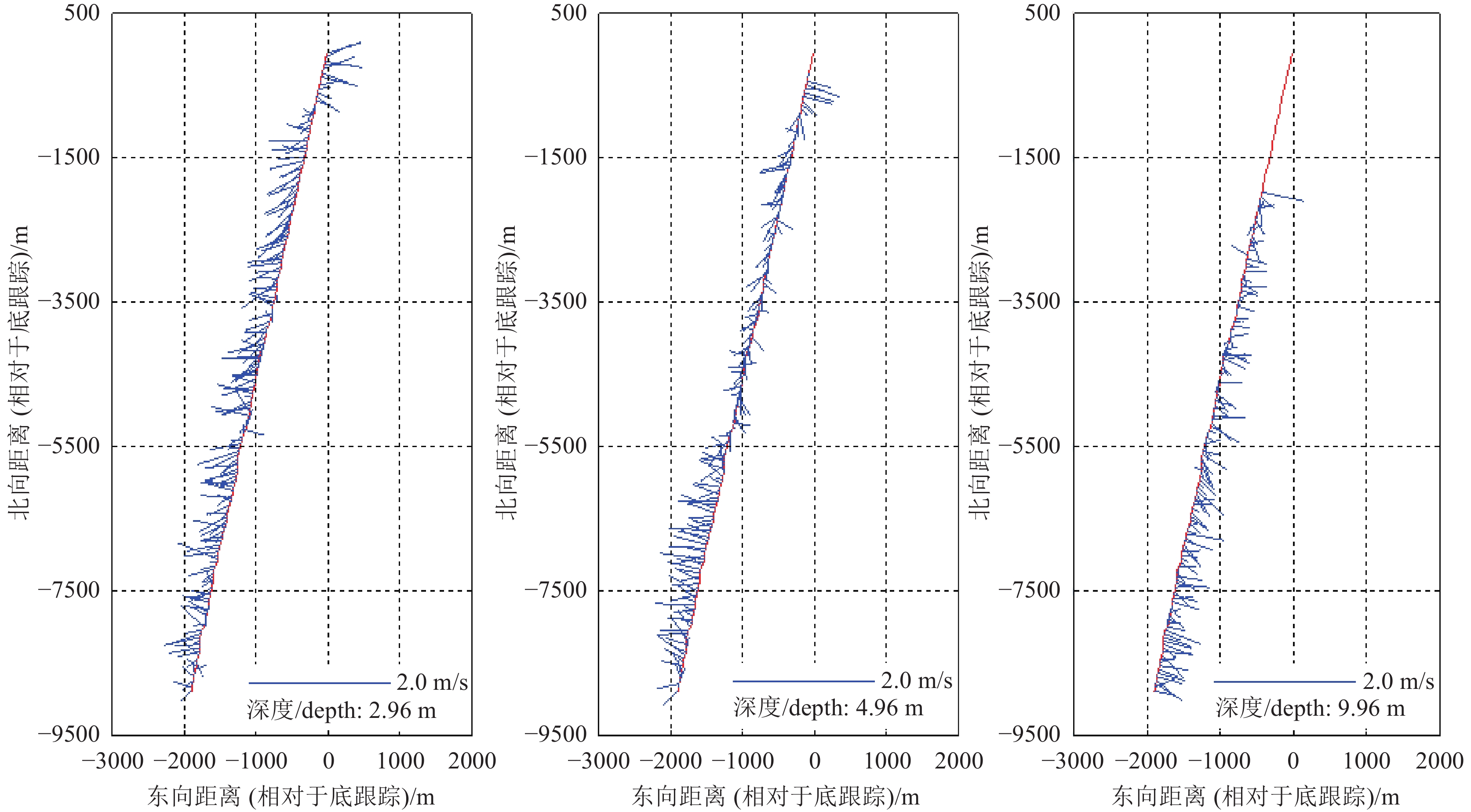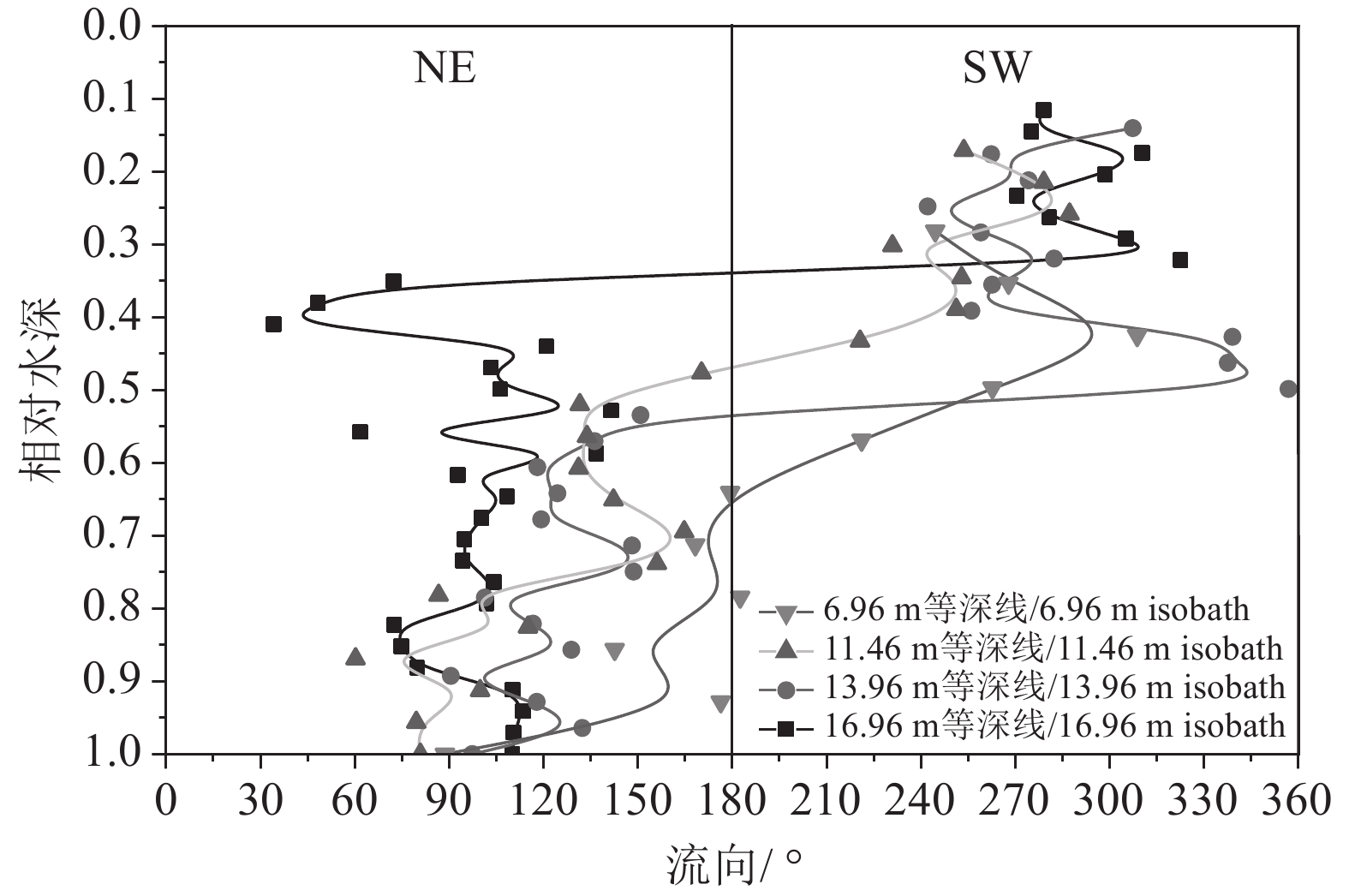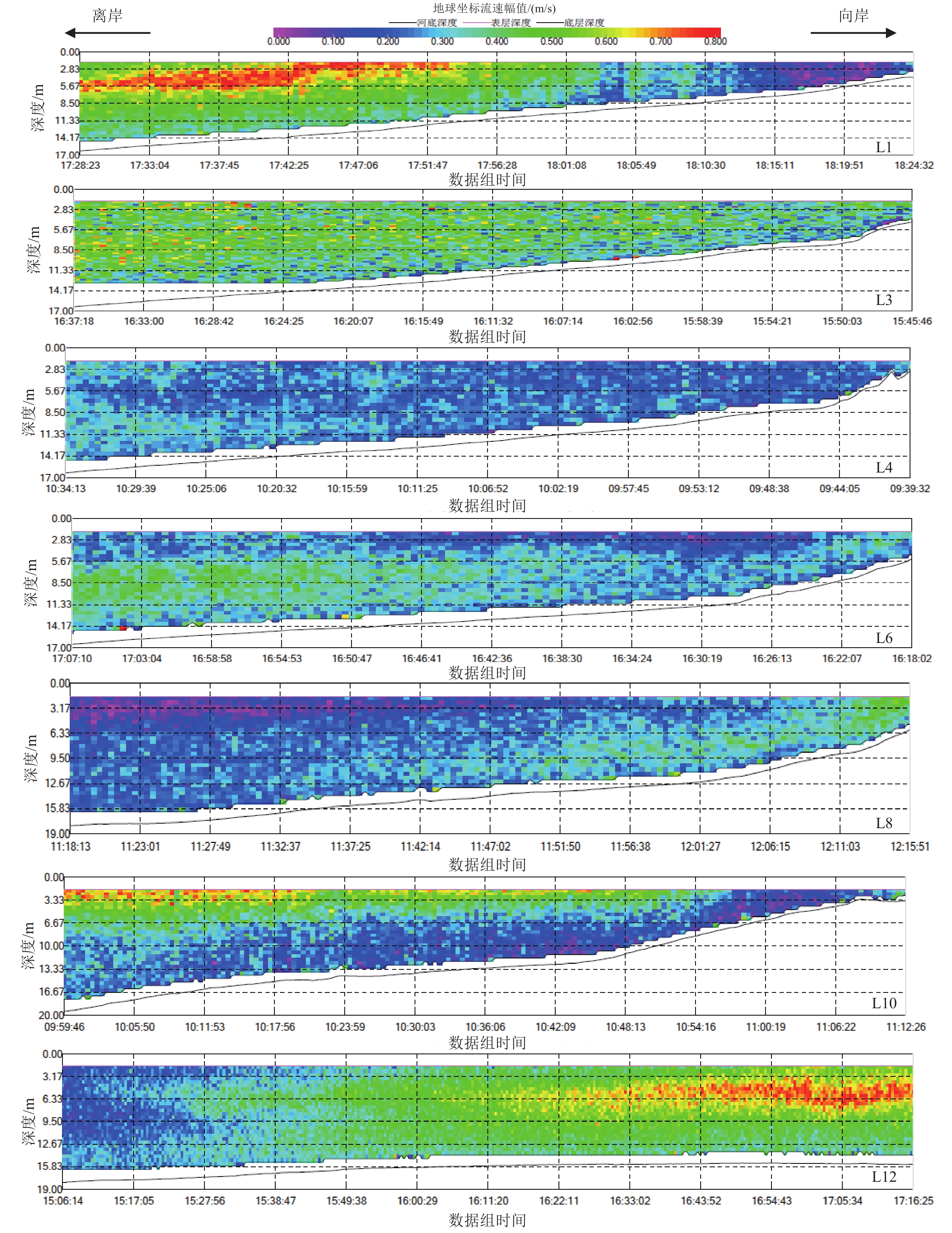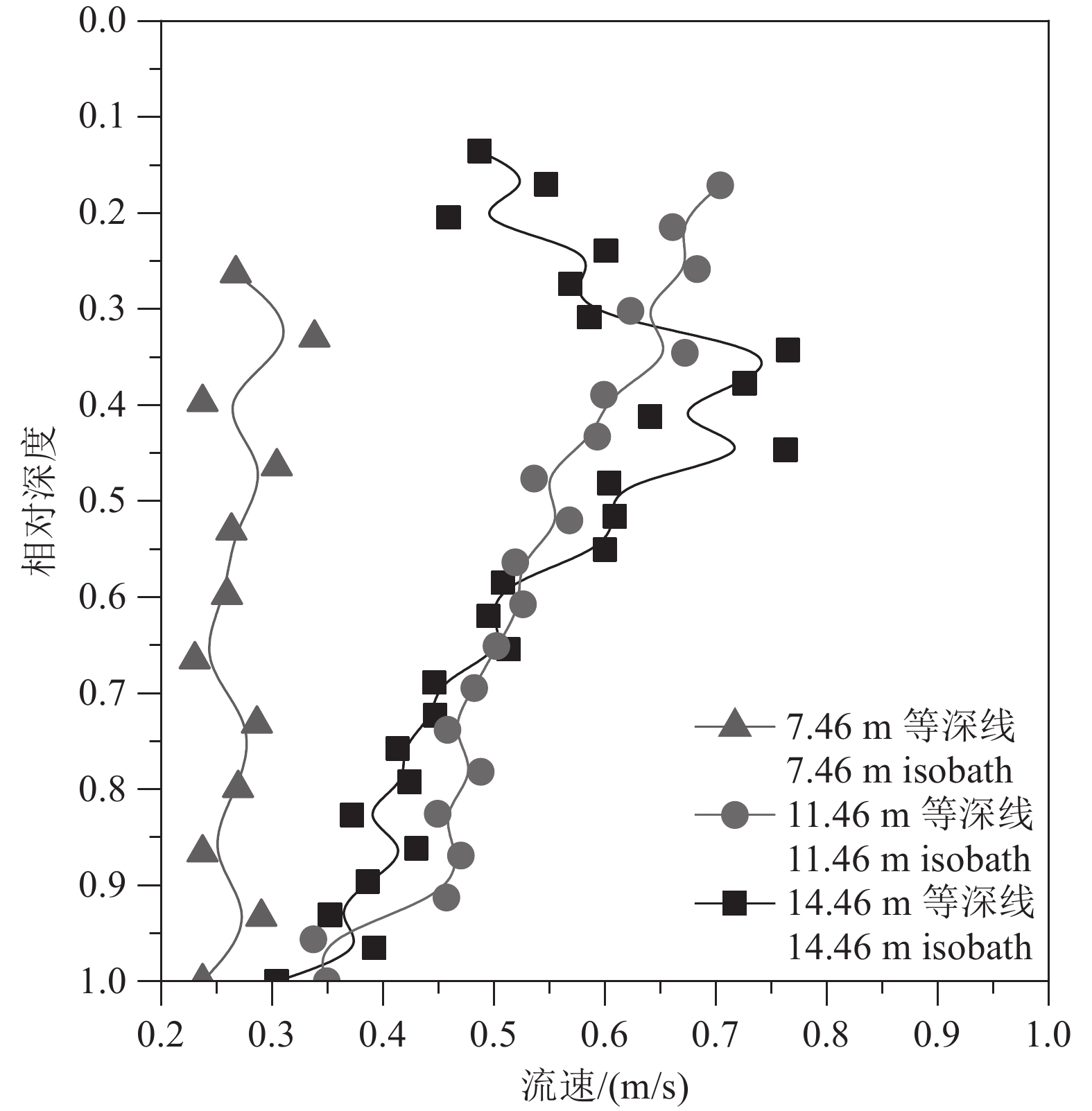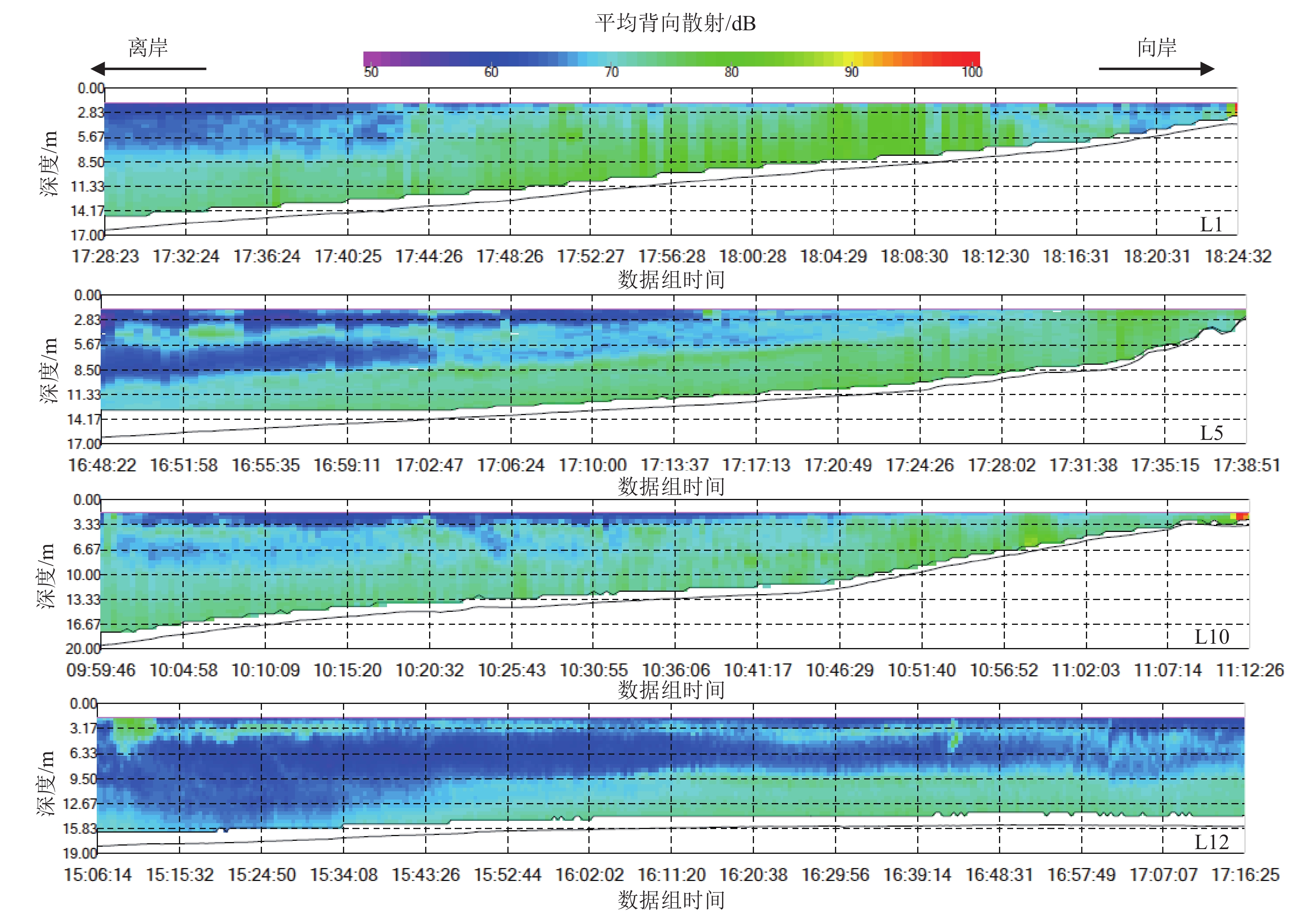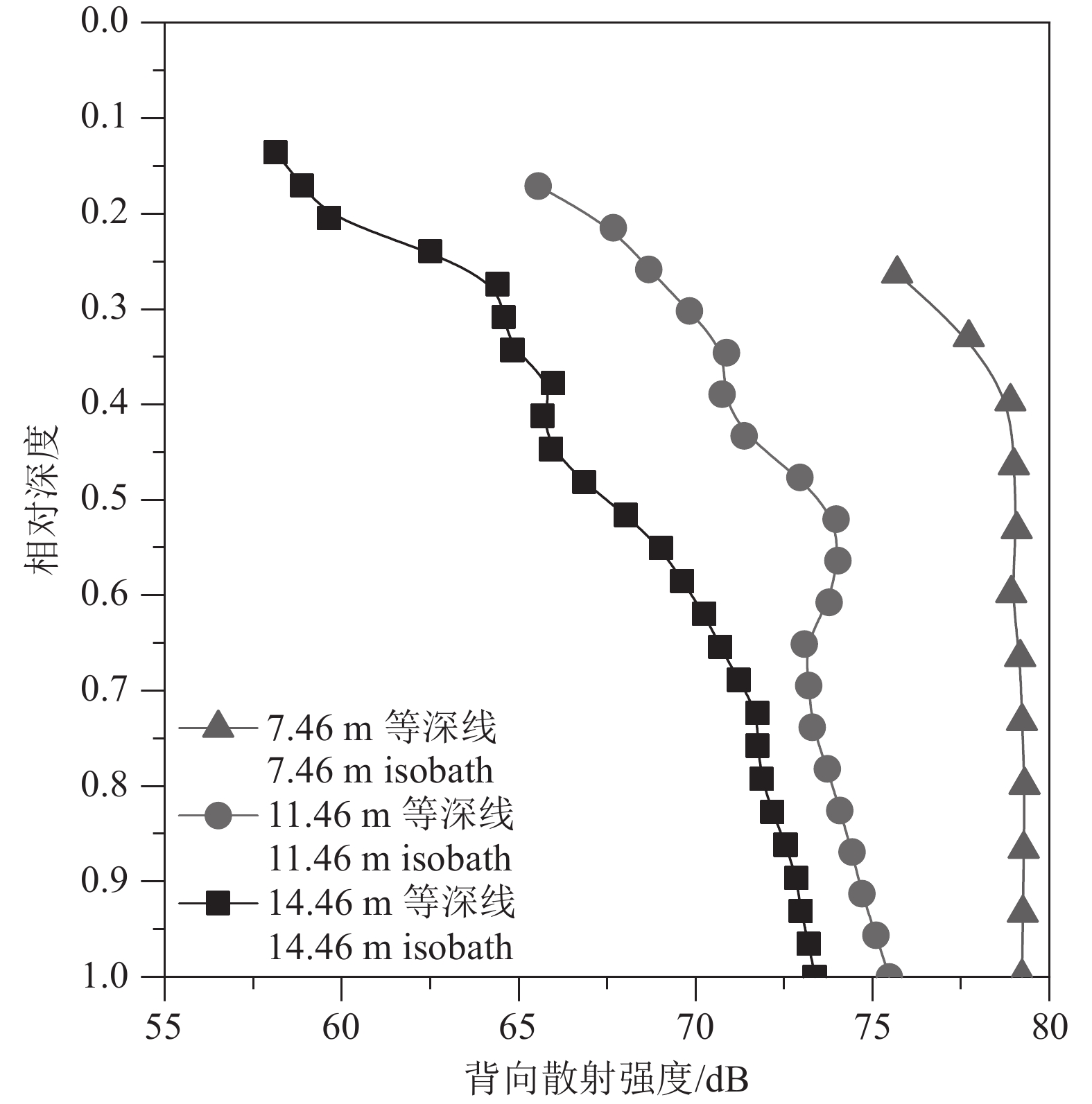Distribution characteristics, genesis types, current status of resource application of barite deposits in China and its prospects
-
摘要:研究目的
重晶石作为中国优势矿种,存在开发利用率低等问题。为保障中国重晶石资源安全, 寻找更多的重晶石资源,本文对支撑石油勘探工业发展和拓宽应用领域具有重要意义。
研究方法本文总结了重晶石的成矿时代、成矿特征、矿床成因类型和成矿物质来源,系统梳理了中国重晶石的分布情况、资源现状以及应用情况,为我国今后对重晶石的开采和应用方面提供了参考。
研究结果中国重晶石矿床的成因类型可分为沉积型、火山沉积型、热液型、层控热液型、风化残坡积型。根据成矿流体来源重晶石可分为海底热液重晶石和生物重晶石这两个端元。全球重晶石已探明储量大约7.4亿t,中国有贵州、广西、湖南和福建等26个省份产出重晶石,作为我国关键矿产之一,是全世界第二大生产国,品位高且出口量大,被广泛应用于油气工业、高新材料、医疗、军事和环保等领域。
结论中国重晶石矿床主要形成于古生代和中生代的江南地区、秦岭地区和黔—桂地区,且以沉积型矿床为主。重晶石成矿流体来源类型繁多,通过地球化学标志可判断出成矿物质来源于海底热液,而通过生物标志性化合物和偏重的硫同位素可得出生物成因结论。重晶石作为重要的高新材料之一,在未来集约化、高效和绿色的产业发展机制中,需注重提高重晶石的精深加工水平、发展战略性新兴产业和拓宽重晶石的应用领域。中国重晶石矿找矿远景应着重加强寻找扬子地台南缘的超大型和大型重晶石矿点、对类似于甘青宁重晶石成矿区等低品位重晶石矿和伴生重晶石矿床的寻找也不容忽视,以及不断探索开发华北和新疆等地区,去寻找更丰富的重晶石资源。
创新点:(1)总结了中国重晶石矿床的成因类型、成矿特征、成矿背景等方面;(2)分析了目前我国重晶石的资源现状以及应用情况,以及找矿潜力和开发利用方向,提高重晶石资源的综合利用率。
Abstract:This paper is the result of mineral exploration engineering.
ObjectiveBarite, as a dominant mineral resource in China, faces challenges such as low utilization efficiency. To ensure the security of China's barite resources, it is essential to further explore and develop barite reserves. This effort is of significant importance for supporting the development of the petroleum exploration industry and broadening its application fields.
MethodsThis paper summarizes the metallogenic epochs, characteristics, genetic types, and material sources of barite deposits. Meanwhile, it systematically reviews the distribution, resource status, and applications of barite in China. This work provides a reference for future mining and application of barium sulfate in China.
ResultsThe genetic types of barite deposits in China can be classified into sedimentary, volcanic-sedimentary, hydrothermal, stratified hydrothermal, and weathering residual-slope accumulation types. Based on the sources of metallogenic fluids, barite can be divided into two end−members: submarine hydrothermal barite and biogenic barite. Globally, the proven reserves of barite are approximately 740 million tons. In China, barite is produced in 26 provinces, including Guizhou, Guangxi, Hunan, and Fujian. As one of China's critical minerals, it ranks as the world's second−largest producer, characterized by high−grade deposits and significant export volumes. Barite is widely used in various fields such as the oil and gas industry, advanced materials, medical treatment, military, and environmental protection sectors.
ConclusionsBarite deposits in China primarily formed during the Paleozoic and Mesozoic eras, with key regions including the Jiangnan, Qinling, and Guizhou−Guangxi areas, dominated by sedimentary−type deposits. The sources of barite metallogenic fluids for barite are diverse. Geochemical signatures indicate that the metallogenic materials originate from submarine hydrothermal fluids, while biomarker compounds and heavier sulfur isotopes indicate a biogenic origin. As one of the crucial advanced materials, barite requires a focus on enhancing its deep processing capabilities, developing its strategic emerging industries, and expanding its application fields within the framework of future intensive, efficient, and green industrial development mechanisms. The future prospecting potential for barite in China should focus on the following aspects to discover more abundant barite resources: Firstly, emphasis should be placed on exploring super−large and large barite deposits in the southern margin of the Yangtze Platform. Secondly, the exploration of low−grade barite deposits and associated barite deposits, similar to those in the Gansu−Qinghai−Ningxia barite metallogenic region, should not be overlooked. Finally, continuous exploration and development in regions such as North China and Xinjiang.
Highlights:(1) This study summarized the genetic type, metallogenic characteristics, and metallogenic background of barite ore; (2) We analyzeel the current resource status and application of barite in China, as well as the potential for finding minerals and the direction of development and utilization, and improved the comprehensive utilization rate of barite resources.
-
1. 引 言
流速、流向及悬浮沉积物浓度对海洋物理、生物、化学要素的循环具有重要影响,是研究浅海及河口地区泥沙输运、物质运移的基本要素。同步获取研究区全剖面的流速、流向及悬浮沉积物浓度对于理解悬浮沉积物输运过程、预测营养盐及污染物的迁移和归宿等问题具有重要的意义。传统的测流方法常采用单点式流速仪,对测点不同深度流速进行逐点测量以获得整个剖面的流速;悬浮沉积物浓度的测量常采用取样过滤称重法,该方法不但费时费力,而且在时间和空间的分辨率有限。
声学技术在海洋观测领域的发展应用,使得海洋水文要素的测量有了质的改变,声学多普勒剖面流速仪(Acoustic Doppler Current Profiler,ADCP),能够快速获得某个完整剖面的流速、流向等参数,同时仪器同步记录的声学背向散射强度可间接计算所测海域悬浮沉积物浓度的分布情况,为海洋泥沙动力输运的研究提供可靠的数据支撑。声学法具有不采样、水体不受扰动、精度高等特点,已被广泛应用于海洋水文要素测量中(Simpson, 2001; Yorke and Oberg, 2002; Ha and Maa, 2008; Salehi and Strom, 2011;张英豪和赖锡军, 2014; Li et al., 2019)。船载走航式ADCP是指将ADCP搭载在调查船上,结合精准的导航系统,在船只走航过程中对所测海域的海流进行连续全剖面测量,具有不扰动流场、测量历时短、测量范围大、充分利用航时等特点,已被广泛应用到江河湖海的流速、流量测量中。如1997 年三峡工程大江截流和2002 年三峡工程明渠截流(杨丰和杨俊青,2004),以及广东北江飞来峡工程截流等(刘勇胜和黄程鹏,2014),杭州湾跨海大桥、港珠澳大桥等工程也均使用ADCP 进行了流速测量(刘彦祥,2016)。
祥云岛位于乐亭县东南部,京唐港与北港之间的沿海地带,岸滩分布有优质天然细沙,是著名的沿海旅游沙岛。祥云岛外海7~15 m等深线海域建有海洋牧场,占海面积1333 hm2。近年来,祥云岛受人为活动及海洋水动力条件影响,沿岸不同区域均出现了不同程度的侵淤现象(陈文超等,2016;汪翡翠等,2021);与此同时,海洋牧场等近岸工程的建设带来的环境效应逐渐受到重视,如崔雷等(2017)通过耦合二维浅水水动力数值模型及物质输运数值模型,对京唐港填海工程中周边潮流场及悬浮沉积物运移进行模拟研究,并分析了对海域水质环境的影响。因此,对祥云岛海域流速、流向及悬浮沉积物浓度的快速同步调查,对祥云岛及其近海工程的生态环境具有重要意义。本文通过船载走航式ADCP在祥云岛海域进行现场海流、悬浮沉积物全剖面测量,为该海域海洋动力、泥沙输运及祥云岛岸线演化等海洋过程的研究提供支撑。
2. 现场调查
2.1 ADCP测流原理
ADCP基于多普勒原理(刘德铸,2010;张春海和董晓冰,2013),通过测定声波入射到海水中微颗粒背向散射在频率上的多普勒频移,从而得到不同水层水体的运动速度。所谓声学多普勒效应是指当物体相对于声源有径向位移时,导致观测到的声源发生改变的现象。多普勒频移与散射粒子速度之间的关系为:
Fd=2FVC 式中:Fd为声学多普勒频移;F为发射声波的频率;V为颗粒物沿声束方向的相对速度;C为声波在海水中的传播速度,式中“2”是因为ADCP发射并接收回波,所以多普勒频移加倍。假定水体中颗粒物的运动速度和水流速度一致,ADCP通过跟踪颗粒物的运动,测定水流相对于ADCP的速度,此速度扣除船速后,即可得到水流的绝对速度(杨锦坤等,2009)。
此外,由于散射ADCP发射波的颗粒物主要是悬浮沉积物,ADCP同步接收水中散射体的回波强度信号的大小能够间接反映水中悬浮沉积物浓度(杨惠丽等,2017)。利用ADCP背向散射强度反演悬浮沉积物含量是一种便捷,高效的方法,其非干扰式的测量特性更易获得真值。自Deines (1999)提出了声学多普勒剖面仪测得的背向散射强度与悬浮沉积物含量的关系后,许多学者也逐步开展了利用ADCP的背向散射强度反演悬浮沉积物含量的研究(Glenn et al., 1999; Hoitink, et al., 2005; Merckelbach et al., 2006; Gunawan et al., 2010)。已有研究表明源声波散射强度的大小与散射水体中的悬浮物浓度的大小成正比(Thorne and Campbell, 1992),在受潮流、潮汐作用强烈的近岸海域,利用回归公式反演的悬浮沉积物浓度与实测数据的平均误差小于20%(姬厚德等,2018)。对于有限海域,泥沙类型和粒径相对均一情况下,声学散射强度与泥沙浓度的关系可简化为公式:lg(C)=K1E+K2,其中C为悬浮沉积物浓度,E为回波强度,K1、K2为拟合因子,通过现场泥沙浓度和回波强度的回归分析来标定(Farmer, 1998)。
2.2 调查区域及测线布置
祥云岛长约13 km,呈NE-SW走向,岛屿面积20.68 km2,属于离岸沙坝岛。祥云岛东北段为潮汐通道,现已人为改造,西南端为大清河口;东部靠海侧建有简易的人工沙堤,中西部靠海侧残留低缓沙丘。潮间带的沙滩面积约为0.64 km2,潮滩平均坡度3°~8°。沉积物以浅黄色、黄棕色的细沙为主,平均粒径Mz介于2.06~2.34ϕ,分选系数介于0.24~0.47(陈文超等,2016;文明征等,2020;梅西等,2020)。
2019年7月25—28日,在祥云岛海域开展走航式ADCP测量。如图1所示本次测量共设计12条测线,其中测线L1~L10垂直于岸滩分布,平均测线长度约8.0 km;测线L11、L12平行于祥云岛分布,平均测线长度为17.5 km。由于祥云岛潮间带平缓,近岸段水深较浅,测量船容易发生触底的危险。为确保调查过程中设备和人员的安全,选择高潮位时间段进行垂直于岸线的测线测量。根据中国地质调查局天津地质调查中心在津冀沿海的潮汐站监测系统(李勇等,2020),各测线测量时间与潮位对应关系如图2所示。
2.3 参数设置
走航式ADCP测量采用美国TRDI公司生产的瑞江牌(WHR600)声学多普勒流速剖面仪,具有4个换能器,主要技术指标有:工作频率600 kHz;换能器发射角度20°测速范围为±0.01~±10 m/s(水平方向),速度分辨率0.25 cm/s;测深范围:0.75~100 m。本次调查过程中ADCP换能器入水深度为1.10 m,波束角为20°;水流层数设置为50,层厚0.50 m,第一层中心位置为1.96 m。
3. 结果与分析
祥云岛位于半封闭的渤海内部,潮汐类型属于不规则半日潮,测量期间平均潮差0.79 m。测线L1、L3、L5~L7及L10~L12测量期间为涨潮期;测线L2、L4、L8及L9测量期为落潮期(图2)。
3.1 测量结果质量控制
现场流速测量过程中受风浪等环境的干扰,测量数据会出现明显的噪点。因此,数据分析前需要将这部分数据剔除。为控制测量数据质量,本次调查将满足回波强度(Echo Intensity)为50~200 counts,相关系数(correlation)为50~200,良好百分比检验参数大于50%的数据作为有效数据,其余数据予以剔除(杨锦坤等,2009)。通常认为ADCP单次回波所测的流速误差比较大,一般使用一段时间的平均流速来表示某一点或时刻的流速,ADCP流速的平均时间可根据具体情况而定(吴云帆等,2014)。本次测量数据中参与平均的呯(ping)集合数为20(测量时船速约2.1 m/s,相当于平均时长为1 min,平均距离约50 m)。
3.2 祥云岛海域流速特征
3.2.1 海流流向特征
走航式ADCP获得沿测线方向的全水深流速,为更直观地显示剖面流速流向特征,本文选取表、中、底不同深度的海流进行分析。如图3所示,测线L5不同深度水层(水深2.21 m、6.21 m、10.21 m)的航迹和流速矢量图结果表明,在涨、落潮阶段海流流向在不同深度水层的流向基本保持一致。对海流流向沿深度方向求均值,如图4所示:测线L1、L3、L5和L7为涨潮期(图4a),涨潮流为SW方向;测线L2、L4和L8为落潮期(图4b),落潮流为NE方向。因此,祥云岛外海海域流向具有明显的往复特征,海流流向以NE−SW为主,基本与祥云岛岸线平行。
图2潮位信息显示,测线L9测量时间为平潮转落潮期,其全水深平均流向并没有表现为明显的NE方向(图4b),测线L9不同深度水层航迹和流速矢量结果如图5所示,在浅表层(2.96 m水深),近岸段流速方向为NE向,沿离岸方向流速方向为SW向,水深4.96 m水层流速矢量表明离岸段流向为SW向,水深9.96 m水层显示流速流向在整个测线上均表现为NE方向,与落潮流的方向保持一致。这表明在平潮转为落潮期间,海流转向始于底部海水,且海流转向与潮位变化具有一定的滞后性。为更清晰地描述这一问题,取测线L9不同等深线处海流流向数据绘制流向剖面分布图,如图6所示:相对水深(流速测量点水深/全水深)大于0.5时,海流流向为NE向,小于0.5是海流流向为SW向;测线L9由近岸向离岸方向测量,潮位逐渐由平潮转为落潮,沿等深线增加方向(离岸方向),流速转向的相对深度逐渐减小,再次证明该海域平潮转为落潮期间海流转向始于底层海水。
3.2.2 海流流速特征
本文选取涨落潮期间典型剖面流速幅值进行对比分析,测线L1、L3、L6和L10为涨潮期、测线L4和L8为落潮期,各测线流速幅值剖面分布如图7所示。涨潮期间,测线 L1位于祥云岛东北端,离岸方向距离海底约11 m高度处有一层相对稳定的高流速层,流速可达0.7~0.8 m/s,向祥云岛滩面方向水深逐渐变浅,水深小于11 m时,该高流速层减弱;测线L10位于祥云岛西南端,其流速特征与测线L1类似,流速沿向岸方向逐渐降低;测线L3流速幅值相对均匀,垂向和向岸方向流速变化不明显;测线L6流速幅值沿向岸方向呈现明显减小的趋势。结果表明:涨潮流流速沿向岸方向逐渐减小;相对于祥云岛东北和西南段,中部流速幅值整体偏小,测线L3和L6涨潮流离岸端流速可达到0.5 m/s以上。测线L4和L8位于祥云岛中部,其流速幅值明显小于测线L3和L6,祥云岛岸段落潮流速明显低于涨潮流速,而测线L8在近岸段的流速要明显大于离岸段。
测线L11与L12均位于涨潮期,涨潮过程中测线L12在时间上更接近于L1和L10(图2)。 以测线L12为例(图7)平行于祥云岛方向,涨潮期间祥云岛东北端存在明显的高流速层,高流速层位于距离海底约11 m处,这与测线L1的测量结果是一致的。为更直观地展现高流速层的分布形态,本文以测线L1为例,取测线L1中不同等深线(14.46 m、11.46 m和7.46 m)处的流速剖面进行对比,如图8所示。离岸方向等深线测量点数值越大,14.46 m处流速剖面结构表现为抛物线型,表明该处存在明显的高流速层,向岸方向,水深减小(7.46 m),流速剖面垂向分布趋于均匀,11.46 m处为过渡段,流速剖面表现为斜直线型。
3.3 祥云岛近岸悬浮沉积物分布
本次测量中未进行同步取样测试,未能建立背向散射强度与悬浮沉积物的回归公式。如前所述,ADCP记录的声学背向散射强度数据能够在一定程度上定性反映祥云岛周边海域的悬浮沉积物分布情况。本次测量中船载走航式ADCP记录了航测过程中的背向散射强度,以涨潮期间测线L1、L5、L10及L12为例,如图9所示。
涨潮期间祥云岛不同位置背向散射强度剖面的分布结果(图9)显示,祥云岛近底普遍存在一层高悬浮沉积物层,且向岸方向悬浮沉积物浓度逐渐增加。图10为测线L1中不同等深线处(14.46 m、11.46 m和7.46 m)的背向散射强度分布对比图,更直观地反映了悬浮沉积物向岸方向增加的现象。测线L12平行于祥云岛方向,沿NE方向在近底逐渐出现一层悬浮沉积物层,高悬浮沉积物浓度层的出现与流速分布(图7,测线L12)具有很好的一致性;水体中悬浮沉积物的维持需要一定的流速,流速幅值为0.30~0.60 m/s时,水体中更容易形成一层稳定的悬浮沉积物层。沿祥云岛岸线由东北向西南方向,流速降低相应的悬浮沉积物浓度也降低,表明悬浮沉积物在向西南方向输运过程中发生沉积。
3.4 悬浮沉积物输运对岸线蚀退的影响
祥云岛是滦河早期从大清河口、长河口入海时建造的沙坝(高善明,1981),自滦河迁徙改道北移入海之后,陆源泥沙来源断绝,加之京唐港的修建,港口防沙堤不断向海延伸,截断了沿岸泥沙的补给,之后祥云岛岸线急剧退化。研究表明1987—2000年,祥云岛岸线呈现出北部侵蚀、南部淤积的状态,岸线变化速率分别为−9.20~+10.40 m/a;2000年以后,北部约1500 m砂质岸线转变为港口围堤,被京唐港扩建、祥云湾码头占用,在沿岸流作用下祥云岛东北段泥沙向西南段运移,引起西南段淤积(邢容容等,2017)。邱若峰等(2010)指出祥云岛西南端的金沙岛岸段,自1987年以来向海拓展22 m,该岸段向海推进的一个重要原因在于人为的吹沙造陆,使得该岸段泥沙补给充足(陈文超等,2016)。 本文测量结果显示祥云岛近海海域涨潮流速(SW向)大于落潮流速(NE向)且祥云岛东北端悬浮沉积物大于西南段悬浮沉积物。这表明目前祥云岛近岸海域的悬浮沉积物整体沿NE−SW方向进行运移,与目前祥云岛岸线的侵蚀现状是一致的。
此外,祥云岛海洋牧场于2007年开始申报建设,牧场位于京唐港西南的祥云湾外海海域,水深7~15 m等深线范围内。海洋牧场建设在其规划海域内投放了包括水泥沉箱、水泥铸块、花岗岩石礁、钢筋板框、船礁等在内的各类人工渔礁共计约20万m3(王湛,2018)。人工渔礁的投放必然对近岸海域的流场产生影响,天津地质调查中心2018年的模拟结果显示,人工渔礁的投放仅对投放区周围两倍面积范围内的流场有影响,并导致明显的侵蚀淤积现象
1 。但该结果尚缺乏现场实测数据支撑,有关海洋牧场建设对海域流场的影响,还需要后续海洋牧场建成后的持续跟踪调查。4. 结 论
利用走航式ADCP在祥云岛海域开展流速、流向及悬浮沉积物浓度等水文要素测量,该方法较传统的定点观测和取样测试,具有不扰动流场、测量历时短、测量范围大、充分利用航时等特点,效率大幅提升。测量结果显示:
(1)祥云岛海域海流以平行于岸线为主,具有明显的往复性,该区域涨潮流明显大于落潮流,涨潮流沿向岸方向逐渐减弱,祥云岛西南部局部落潮流存在向岸方向增强的现象。
(2)祥云岛海域在平潮向落潮过渡期间,海流转向始于底部海水,且海流转向与潮位变化具有一定的滞后性。
(3)测量期间背向散射强度数据表明,祥云岛近岸海域存在明显的高浓度层,且沿向岸方向浓度增加,平行于祥云岛岸线方向,悬浮沉积物浓度由东北向西南方向逐渐降低。
(4)祥云岛近岸海域在涨落潮流的作用下,悬浮沉积物沿祥云岛岸线由东北向西南运移,是导致祥云岛岸线在东北段侵蚀、西南段淤积的主要原因之一。
1 ❶ USGS. 2023. Minerals Commodity Summaries[R]. Reston, Virginia, United States Geological Survey.2 ❷自然资源部信息中心 .2022. 中国矿产资源储量(2022)[R].3 ❸中国海关总署.(2022).中国海关进出口数据[数据集].取自http://www.customs.gov.cn -
图 1 中国重晶石矿床主要形成时代及不同地层储量占比直方图(据Li et al., 2023)
Figure 1. Histogram of major metallogenic age of barite deposits in China and the percentage of reserves in each stratum (after Li et al., 2023)
图 2 中国南方重晶石矿分布图(据李文炎和余洪云,1991; Wang and Li,1991; 宣之强,1999; 李春阳等,2010)
Figure 2. Distribution of barite mines in the South China (after Li Wenyan and Yu Hongyun,1991; Wang and Li,1991; Xuan Zhiqiang,1999; Li Chunyang et al.,2010)
图 3 典型重晶石矿成矿模式图
a—沉积型(据田升平等, 2014);b—火山沉积型(据田江涛等, 2017);c—热液型(据田升平等, 2014);d—风化残坡积型(据田升平等, 2014);e—层控热液型(据何钦和张扬, 2018)
Figure 3. Map of typical barite metallogenic model
a–Sedimentary type (after Tian Shengping, 2014); b–Volcanic−sedimentary type (after Tian Jiangtao et al., 2017); c–Hydrothermal type (after Tian Shengping, 2014); d–Weathering residual slope type (after Tian Shengping, 2014); e–Stratified hydrothermal type (after He Qin and Zhang Yang, 2018)
图 4 成矿流体来源模型
a—热液模型;b—生物模型(据Jewell and Stallard, 1991; Koski and Hein, 2004; 昝博文等, 2017)
Figure 4. Source model of ore-forming fluid
a–Hydrothermal model; b–Biological model (after Jewell and Stallard, 1991; Koski and Hein, 2004; Zan Bowen et al., 2017).
表 1 中国一些典型重晶石矿床中重晶石及其伴生矿物的Sr、S、C、O同位素组成
Table 1 Sr, S, C, O isotopic compositions of barite and its associated minerals in some typical barite deposits in China
矿区 测试矿物类型 87Sr/86Sr δ34S /‰ δ18O/‰ δ13C/‰ 数据来源 平利县神仙台 重晶石,白云石 0.707556~
0.70815520.6~24.8 20.6~24.8 Xu et al., 2016 湖北赤炎 重晶石、毒重石 0.708459~
0.70878043.7~48.3 18.7~24.2 Xu et al., 2016 湖北竹山县文峪河 重晶石、毒重石、钡方解石 26.2~30.5 9.9~15.3 −20.4~−13.9 石龙, 2007 陕西紫阳黄柏树湾 毒重石、钡方解石 0.708272~
0.70886916.5~21.6 −16.6~−11.6 Lu et al., 2003 重庆市城口巴山 重晶石、毒重石、钡方解石 0.708266~
0.70850429.8~37.0 12.8~19.1 −18.9~−10.8 范德廉等, 2004 山西柳林 重晶石 31.8~40.1 Wang and Li, 1991 贵州镇宁 重晶石 0.70863~
0.70898高军波等, 2012 贵州天柱大河边 重晶石 0.708310~
0.70896729.5~57.4 16.7~18 夏菲等, 2004;
Johnson et al., 2009;
Han et al., 2015;
温汉捷等, 2017贵州施秉县顶罐坡重晶石矿床 重晶石 16.13~
28.82李春阳等, 2010 湖北柳林重晶石矿 重晶石 0.708570~
0.708810方旭等, 2013 鄂西地区南庄坪 重晶石 23~36 何钦和张扬, 2018 陕西安康 重晶石、毒重石 0.708027~
0.70844730.5~54.2 9.9~18 −27.3~−11.8 叶连俊, 1998 ; Wu et al., 2015 广西象州 重晶石、白云石 11.77~30.09 贺胜辉等, 2014 湖南新晃 重晶石 33.04~41.02 彭军等, 1999; 孙学通, 2004 陕西略阳东沟坝 重晶石 16.9~20.3 汪东波和李树新, 1991 表 2 2022年全球重晶石产量(数据来源:USGS,2023
1 )Table 2 Global barite production 2022 (Data source: USGS, 2023
1 )国家 重晶石产量/kt 中国 1900 印度 2600 伊朗 220 哈萨克斯坦 500 墨西哥 320 俄罗斯 150 摩洛哥 1300 土耳其 300 其他国家 580 表 3 2015—2022年中国重晶石进出口情况(数据来源:中华人民共和国海关总署
3 )Table 3 China barite import and export 2015−2022 (Data source: General Administration of Customs of the People's Republic of China
3 )年份 2015 2016 2017 2018 2019 2020 2021 2022 出口重量(万吨) 207.26 159.56 201.67 120.96 112.61 54.13 92.27 72.21 出口金额(亿美元) 2.73 1.86 2.04 1.59 1.42 0.88 1.40 1.30 进口重量(万吨) 0.67 0.44 1.10 1.51 11.82 8.73 3.50 7.98 进口金额(亿美元) 0.009 0.01 0.01 0.02 0.10 0.09 0.04 0.09 表 4 2022年全国各省份重晶石资源储备量(数据来源:自然资源部信息中心
2 )Table 4 National barite resource reserves in various provinces of 2022 (Data source: Information Center of the Ministry of Natural Resource
2 )省份 资源储备量/万t 浙江 732.79 福建 268.16 湖北 495.27 重庆 518.59 云南 206.85 湖南 1443.69 贵州 4293.25 广西 1142.89 甘肃 1133.53 其他省份 500.56 表 5 重晶石的应用领域一览表
Table 5 List of application fields of barite
应用领域 主要用途
石油工业重晶石是石油和天然气行业最重要的加重剂材料,高密度、化学性质稳定等特点的重晶石应用于钻井泥浆中,可以有效地防止喷井事故的发生
钡化工产品重晶石中钡含量较高,可作为钡化工产品的钡源;这些化工产品广泛用于电子工业、医药行业、光学玻璃、各类材料的填料、添加剂等方面
防辐射材料将重晶石加入混凝土中以增加房子对X射线和γ射线的屏蔽性能,可应用于医院、核电站、辐射实验室等;将其作为防护服的原材料之一可防止医护人员、科研人员等受到辐射的危害
高新
材料
钡铁氧体材料改性后的重晶石作为钡铁氧体材料里钡的来源,该材料适用于通讯设备、军事等,还可应用于药物运输、抗菌活性等的生物医学应用;除此之外,还可以净化水和空气中的污染物
其他将重晶石改性后应用于各种复合材料、导电材料、磁性材料、耐高温材料等,例如增加橡胶的耐磨性、涂料的稳定性等;还能用于导电涂料来减少导军事、医疗、电子产品中电磁的干扰;此外还可以作为废水中的吸附剂吸附铬酸盐来减少水环境污染 其他 胃肠道X射线双重造影剂、颜料、塑料等 -
[1] Akkurt I, Akyildirim H, Mavi B, Kilincarslan S, Basyigit C. 2010. Gamma−ray shielding properties of concrete including barite at different energies[J]. Progress in Nuclear Energy, 52(7): 620−623. doi: 10.1016/j.pnucene.2010.04.006
[2] Al Jaberi J, Bageri B, Elkatatny S, Patil S. 2023. Primary investigation of barite–weighted water–based drilling fluid properties[J]. Acs Omega, 8(2): 2155−2163. doi: 10.1021/acsomega.2c06264
[3] Alaminia Z, Sharifi M. 2018. Geological, geochemical and fluid inclusion studies on the evolution of barite mineralization in the badroud area of Iran[J]. Ore Geology Reviews, 92: 613−626. doi: 10.1016/j.oregeorev.2017.12.011
[4] Bernstein R E, Byrne R H, Betzer P R, Greco A M, Helgeson H C. 1992. Morphologies and transformations of celestite in seawater; the role of acantharians in strontium and barium geochemistry[J]. Geochimica et Cosmochimica Acta, 56(8): 3273−3279. doi: 10.1016/0016-7037(92)90304-2
[5] Bishop J K B. 1988. The barite–opal–organic carbon association in oceanic particulate matter[J]. Nature, 332(6162): 341−343. doi: 10.1038/332341a0
[6] Brobst D A. 1958. Barite resources of the United States[J]. U. S. Geological Survey Bulletin, 1072: 67–130.
[7] Bruton J R, Bacho J P, Newcaster J. 2006. The future of drilling–grade barite weight material: A case for a substitute specification[C]//SPE Annual Technical Conference and Exhibition.
[8] Bulatovic S M. 2015. Chapter 34–Beneficiation of Barite Ores[M]. Handbook of Flotation Reagents: Chemistry, Theory and Practice, 129–141.
[9] Cansu Z, öztürk H. 2020. Formation and genesis of Paleozoic sediment–hosted barite deposits in Turkey[J]. Ore Geology Reviews, 125: 103700. doi: 10.1016/j.oregeorev.2020.103700
[10] Chu Youlong. 1989. Genetic types of barite deposits in China[J]. Mineral Deposits, 8(4): 91−96 (in Chinese with English abstract).
[11] Clark S H B, Poole F G, Wang Z. 2004. Comparison of some sediment–hosted, stratiform barite deposits in China, the United States, and India[J]. Ore Geology Reviews, 24(1): 85−101.
[12] Clark S, Gallagher M J, Poole F G. 1990. World barite resources: A review of recent production patterns and a genetic classification[J]. Transactions of the Institution of Mining and Metallurgy Section B–Applied Earth Science, 99B: 125−132.
[13] Crockford P W, Wing B A, Paytan A, Hodgskiss M S W, Mayfield K K, Hayles J A, Middleton J E, Ahm A C, Johnston D T, Caxito F, Uhlein G, Halverson G P, Eickmann B, Torres M, Horner T J. 2019. Barium–isotopic constraints on the origin of post–Marinoan barites[J]. Earth and Planetary Science Letters, 519: 234−244. doi: 10.1016/j.jpgl.2019.05.018
[14] Dang Zhicai, Li Junjian, Fu Chao, Ni Zhenping, Peng Yi, Song Lijun, Wang Liying. 2021. The characteristics of barite deposits and prospecting direction in north China[J]. North China Geology, 44(3): 65−69 (in Chinese with English abstract).
[15] Demir F, Budak G, Sahin R, Karabulut A, Oltulu M, Un A. 2011. Determination of radiation attenuation coefficients of heavyweight– and normal–weight concretes containing colemanite and barite for 0.663MeV γ–rays[J]. Annals of Nuclear Energy, 38(6): 1274−1278. doi: 10.1016/j.anucene.2011.02.009
[16] Dymond J, Suess E, Lyle M. 1992. Barium in deep–sea sediment: A geochemical proxy for paleoproductivity[J]. Paleoceanography, 7(2): 163−181. doi: 10.1029/92PA00181
[17] Ebunu A I, Olanrewaju Y A, Ogolo O, Adetunji A R, Onwualu A P. 2021. Barite as an industrial mineral in Nigeria: Occurrence, utilization, challenges and future prospects[J]. Heliyon, 7(6): e7365.
[18] Falkner K K, Klinkhammer G P, Bowers T S, Todd J F, Lewis B L, Landing W M, Edmond J M. 1993. The behavior of barium in anoxic marine waters[J]. Geochimica et Cosmochimica Acta, 57(3): 537−554. doi: 10.1016/0016-7037(93)90366-5
[19] Fan Delian, Yang Xiuzhen, Wang Lianfang Chen Nansheng. 1973. Petrological and geochemical characteristics of a nickel molybdenum multe element bearing lower Cambrian black shale from a certain district in South China[J]. Geochimica, (3): 143−164 (in Chinese with English abstract).
[20] Fan Delian, Ye Jie, Yang Ruiying, Huang Zhongxiang. 1987. The geological events and ore mineralization nearby the precambrian–cambrian boundary in Yangtze platform[J]. Act Sedimentologica Sinica, 5(3): 81−95 (in Chinese with English abstract).
[21] Fan Delian, Zhang Tao, Ye Jie, et al. 2004. Black Rock Series and Related Deposits in China[M]. Beijing: Science Press, 457 (in Chinese).
[22] Fang Xu, Xu Tianliang, Han Ling, Wang Chunmei, Xu Peng, Qu Jing, Cai Lijuan. 2013. Geological characteristics and metallogenic model of Liulin barite ore district in Shuizhou city, Hubei Province[J]. Resources Environment & Engineering, 27(5): 615−619 (in Chinese with English abstract).
[23] Fisher N S, Guillard R R L, Bankston D C. 1991. The accumulation of barium by marine phytoplankton grown in culture[J]. Journal of Marine Research, 49(2): 339−354. doi: 10.1357/002224091784995882
[24] Francois R, Honjo S, Manganini S J, Ravizza G E. 1995. Biogenic barium fluxes to the deep sea: Implications for paleo productivity reconstruction[J]. Global Biogeochemical Cycles, 9(2): 289−303. doi: 10.1029/95GB00021
[25] Ganeshram R S, François R, Commeau J, Brown–Leger S L. 2003. An experimental investigation of barite formation in seawater[J]. Geochimica et Cosmochimica Acta, 67(14): 2599−2605. doi: 10.1016/S0016-7037(03)00164-9
[26] Gao Huaizhong. 1998. The biochemical sedimentary metallogenic model of baritic and witheritic deposits in lower Cambrian in China[J]. Mineral and Petrology, 18(2): 71−78 (in Chinese).
[27] Gao Junbo, Yang Ruidong, Tao Ping, Wei Huairui, Liu Kun. 2012. Hydrothermal venting–flowing sedimentation characteristics of Devonian barite deposits from Leji, Zhenning County, Guizhou Province[J]. Acta Sedimentologica Sinica, 30(3): 422−430 (in Chinese with English abstract).
[28] Goldberg E D, Arrhenius G O S. 1958. Chemistry of pacific pelagic sediments[J]. Geochimica et Cosmochimica Acta, 13(2): 153−212.
[29] Griffith E M, Paytan A. 2012. Barite in the ocean–occurrence, geochemistry and palaeoceanographic applications[J]. Sedimentology, 59(6): 1817−1835. doi: 10.1111/j.1365-3091.2012.01327.x
[30] Guan Shiyu. 1985. Disussion on the development and utilization of barite ore in Guangxi[J]. Geology in China, (7): 17−18 (in Chinese).
[31] Guo Jiayi, Chen Jianguang, Sun Hongtao, Xie Baiyang, Jiang Zhiye. 2022. Discussion on the characteristics and genesis of Baotou barite deposit in Dengfeng, Henan[J]. China Non–Metallic Minerals Industry, (1): 49−52, 77 (in Chinese with English abstract).
[32] Guo Suxiong, Yang Jinan. 2022. Analysis of geological characteristics and prospecting potential of the barite mine in Liangtingao, Guzhang, Hunan[J]. Geology of Chemical Minerals, 44(1): 18−22 (in Chinese with English abstract).
[33] Han S C, Hu K, Cao J, Pan J Y, Xia F, Wu W F. 2015. Origin of early Cambrian black–shale–hosted barite deposits in south China: mineralogical and geochemical studies[J]. Journal of Asian Earth Sciences, 106: 79−94.
[34] Han Shanchu, Hu Kai, Cao Jian. 2013. First discovery of zoned hyalophane in the barite deposits hosted in early Cambrian black shales of south China and its geological implications[J]. Geological Review, 59(6): 1143−1149 (in Chinese with English abstract).
[35] Han Shanchu, Hu Kai, Cao Jian. 2014. Organic geochemistry of barite deposits hosted in the Early Cambrian black shales from the Tianzhu County, Guizhou[J]. Geochemica, 43(4): 386−398 (in Chinese with English abstract).
[36] Hanor J S, Alpers C N, Jambor J L, Nordstrom D K. 2000. Barite–celestine geochemistry and environments of formation[J]. Reviews in Mineralogy and Geochemistry, 40(1): 193−275. doi: 10.2138/rmg.2000.40.4
[37] He Jianping, Li Yuanjia, Zhou Ziqin. 2020. Geological characteristics and deposit genesis of the Dahuoluo barite mine in Subei county, Gansu Province[J]. Gansu Science and Technology, 36(11): 15−18 (in Chinese).
[38] He Qin, Zhang Yang. 2018. Geological characteristics and metallogenic model of Nanzhuangping barite deposit in western of Hubei province[J]. Resource Environment and Engineering, 32(4): 528−532 (in Chinese with English abstract).
[39] He Shenghui, Rong Huifeng, Chen Xiansheng. 2014. Geochemical characteristics of a copper–ead–zinc–barite deposition Guangxi and their geological implications[J]. Geophysical and Geochemical Exploration, 38(3): 447−452 (in Chinese with English abstract).
[40] Hein J R, Zierenberg R A, Hannington J B M A. 2007. Barite–forming environments along a rifted continental margin, southern California borderland[J]. Deep Sea Research. Part II: Topical Studies in Oceanography, 54(11−13): 1327−1349. doi: 10.1016/j.dsr2.2007.04.011
[41] Hessien M M, Khedr M H. 2008. Catalytic activity and magnetic properties of barium hexaferrite prepared from barite ore[J]. Materials Research Bulletin, 42(7): 1242−1250.
[42] Himanshi, Jasrotia R, Prakash J, Verma R, Thakur P, Kandwal A, Wan F, Thakur A. 2023. Synthesis, characterization, and applications of doped barium hexaferrites: A review[J]. Physica B: Condensed Matter, 667: 415202. doi: 10.1016/j.physb.2023.415202
[43] Hu Peiwei, Yang Huaming, Hu Yuehua, Huo Jiancheng. 2008. Preparation and application progress of barite mineral materials[J]. Materials Review, 22(S2): 191−194 (in Chinese with English abstract).
[44] Huang Yan. 2011. Sedimentary Geochemistry of the Ferrous System of the Cambrian Niuhuitang Formation in Zhangjiajie, Hunan[D]. Chengdu: Chengdu University of Technology, 1−62 (in Chinese with English abstract).
[45] Jamieson J W, Hannington M D, Tivey M K, Hansteen T, Williamson N M B, Stewart M, Fietzke J, Butterfield D, Frische M, Allen L, Cousens B, Langer J. 2016. Precipitation and growth of barite within hydrothermal vent deposits from the Endeavour Segment, Juan de Fuca Ridge[J]. Geochimica et Cosmochimica Acta, 173(1): 64−85.
[46] Jébrak M, El Wartiti M, Marcoux E, Zaharoui M. 2011. The Bouznika Cambrian barite deposit (Morocco), an early mineralization on the Iapetus margin[J]. Journal of African Earth Sciences, 60(3): 53−62. doi: 10.1016/j.jafrearsci.2011.02.001
[47] Jewell P W, Glenn C R, Prevot–Lucas L, Lucas J. 2000. Bedded barite in the geologic record[J]. Special Publication – Society for Sedimentary Geology, 66: 147−161.
[48] Jewell P W, Stallard R F. 1991. Geochemistry and pale oceanographic setting of central Nevada bedded barites[J]. The Journal of Geology, 99(2): 151−170. doi: 10.1086/629482
[49] Jiang S, Chen Y, Ling H, Yang J, Feng H, Ni P. 2006. Trace and rare–earth element geochemistry and Pb–Pb dating of black shales and intercalated Ni–Mo–PGE–Au sulfide ores in lower Cambrian strata, Yangtze platform, south China[J]. Mineralium Deposita, 41(5): 453−467. doi: 10.1007/s00126-006-0066-6
[50] Jiang Ya, Wang Ting, Long Tao. 2021. Research on listing barite as a strategic mineral resource[J]. Acta Geoscientica Sinica, 42(2): 297−302 (in Chinese with English abstract).
[51] Johnson C A, Emsbo P, Poole F G, Rye R O. 2009. Sulfur and oxygen–isotopes in sediment–hosted stratiform barite deposits[J]. Geochimica Et Cosmochimica Acta: Journal of the Geochemical Society and the Meteoritical Society, 73(1): 133−147. doi: 10.1016/j.gca.2008.10.011
[52] Klump J. 1999. Biogenic Barite as a Proxy of Paleo Productivity Variations in the Southern Peru–Chile Current[D]. Germany: University Bremen, 1−109.
[53] Koski R A, Hein J R. 2004. Chapter H: Stratiform barite deposits in the roberts mountains allochthon, Nevada: a review of potential analogs in modern sea–floor environments[J]. Geological Survey Bulletin, 17.
[54] Li Y, Zou H, Said N, Liu H. 2023. A new classification of barite deposits in China[J]. Ore and Energy Resource Geology, 14: 100019. doi: 10.1016/j.oreoa.2023.100019
[55] Li Bo, Huang Zhilong, Xu Cheng. 2007. Sulfur isotope geochemistry of the mianning REE deposit, Sichuan Province, China[J]. Acta Mineralogica Sinica, 27(3): 430−433 (in Chinese with English abstract).
[56] Li Chunyang, Tian Shengping, Niu Guizhi. 2010. Discussion on China barite–concentrating area and the resource potential[J]. Geology of Chemical Minerals, 32(2): 75−86 (in Chinese with English abstract).
[57] Li Wenyan, Yu Hongyun. 1991. Barite deposits of China [M]. Beijing: Geologica Publishing House, 1−105(in Chinese).
[58] Li Zhanyuan. 2004. Distribution of barite resources and development prospects in China[J]. China Non–Metallic Minerals Industry, (5): 86−88 (in Chinese).
[59] Lin Qiuling, Li Xiaohu, Meng Xinwei, Wang Hao, Ding Yi, Fan Zedong. 2023. Geochemical characterization of barite from modern submarine hydrothermal field and its affecting factors[J]. Chinese Journal of Geology, 58(3): 1091−1117 (in Chinese with English abstract).
[60] Liu Jiajun, Wu Shenghua, Liu Zhenjiang, Su Wenchao, Wang Jianping. 2010. A discussion on the origin of Witherite deposits in large–scale barium metallogenic belt, southern Qinling mountains, China: Evidence from individual fluid includsion[J]. Earth Science Frontiers, 17(2): 222−238(in Chinese with English abstract).
[61] Liu Ling, Shi Qingpeng, WenXingqiao, Xu Dongpo, Wang Wenjie. 2015. Metallogenic condition and prospecting potential analyses of Tianzhu barite deposit in Guizhou[J]. Guizhou Geology, 32(4): 262−266 (in Chinese with English abstract).
[62] Liu Ling, Yang Honghui, Shi Qingpeng. 2019. Geological characteristics and metallogenic regularity of hydrothermal barite ore–concentrating district in Guizhou province[J]. Guizhou Geology, 36(3): 207−214 (in Chinese with English abstract).
[63] Liu Sicong, Ning Shuyuan, Zheng Deshun. 2021. Petrogenesis and sedimentary environment of black rock series of the lower Cambrian Shuigoukou formation in south Qinling[J]. Acta Geologica Sinica, 95(2): 549−564 (in Chinese with English abstract).
[64] Lu Z C, Liu C Q, Liu J J, Zhao Z Q. 2003. Carbon, oxygen and boron isotopic studies of Huangbai–shuwan Witherite deposit at Ziyang and Wenyuhe Witherite deposit at Zhushan[J]. Science in China (Series D: Earth Sciences), 46(12): 1273−1291.
[65] Martinez–Ruiz F, Paytan A, Gonzalez–Muñoz M T, Jroundi F, Abad M M, Lam P J, Bishop J K B, Horner T J, Morton P L, Kastner M. 2019. Barite formation in the ocean: origin of amorphous and crystalline precipitates[J]. Chemical Geology, 511: 441−451.
[66] Misbah, Bibi I, Majid F, Kamal S, Jilani K, Taj B, Nazeer Z, Iqbal M. 2022. Enhanced visible light–driven photocatalytic degradation of crystal violet dye using Cr doped BaFe12O19 prepared via facile micro–emulsion route.[J]. Journal of Saudi Chemical Society, 26(6): 101533. doi: 10.1016/j.jscs.2022.101533
[67] Pan Zhongfei, Fu Yong, Guo Chuan, Shi Chunhua, Liu Ling, Liu Yang, Long Zhen, Luo Peiqi, Liu Guodong, Yao Lan, Yang Ying and Yang Qianmin. 2023. Geological characteristics, mineralization and metallogenic mechanism of barite mineralization[J]. Mineral Deposits, 42(1): 90−115 (in Chinese with English abstract).
[68] Penaloza I, Tita A, Mcnew E, Chu P. 2023. Barite resources, production and recovery using froth flotation: A review[J]. Minerals Engineering, 203: 108327. doi: 10.1016/j.mineng.2023.108327
[69] Peng Jun, Xia Wenjie, Yi HaiSheng. 1999. Geological and geochemical characteristics and analysis of genesis of the GongXi barite deposit, Xinhuang County, Hunan province[J]. Journal of Chengdu University of Technology, 26(1): 92−96 (in Chinese with English abstract).
[70] Poole F G. 1988. Stratiform Barite In Paleozoic Rocks of the Western United States[M]. Zachrisson E. Proceedings of the Seventh Quadrennial IAGOD Symposium. Stuttgart, Germany: E. Schweizerbar’ sche Verlargsbuchhandlung, 309–319.
[71] Prakash Babu C, Brumsack H J, Schnetger B, Böttcher M E. 2002. Barium as a productivity proxy in continental margin sediments: a study from the Eastern Arabian sea[J]. Marine Geology, 184(3): 189−206.
[72] Prieto M E A F. 2002. Sorption of chromate ions diffusing through barite–hydrogel composites: Implications for the fate and transport of chromium in the environment[J]. Geochimica et Cosmochimica Acta, 66(5): 783−795. doi: 10.1016/S0016-7037(01)00821-3
[73] Prieto M M G U, Heberling F, Rodríguez–Galán R M, Brandt F. 2016. Crystallization behavior of solid solutions from aqueous solutions: an environmental perspective[J]. Progress in Crystal Growth & Characterization of Materials, 62(3): 29−68.
[74] Qi Bingde, Zhou Yunlong, Ma Lanlan. 2018. Discussion on the genesis and metallogenic model of barite and lead–zinc deposition Shibing–Yuqing Area, Guizhou[J]. World Nonferrous Metals, (13): 293−294 (in Chinese with English abstract).
[75] Sharma I, Kumari T, Thakur N, Sharma P, Batoo K M, Verma R. 2023. Citrate precursor route for Y3+ substituted M–type Ba–hexaferrite: synthesis, the effect of doping on structural, optical, magnetic and anti–bacterial properties[J]. Materials Chemistry and Physics, 302: 127664. doi: 10.1016/j.matchemphys.2023.127664
[76] Shi Long. 2007. Discussion on Forming Conditions and Process of the Barite–Witherite Deposits in Lower Cambrian, Northern Daba Mountains, China[D]. Beijing: China University of Geosciences, 1–80 (in Chinese with English abstract).
[77] Shimmield G B, Mowbray S R. 1991. The inorganic geochemical record of the northwest Arabian Sea: a history of productivity variation over the last 400 k. y. from sites 722 and 724[J]. Proceedings of the Ocean Drilling Program: Scientific Results, 117.
[78] Sun Xuetong. 2004. Submarine–hydrothermal Exhalative Ore Layers in Black Shales from South China and Associated Fossils — Insights into a Lower Cambrian Facies and Bio–evolution [D]. Nanjing : Nanjing University(in Chinese with English abstract).
[79] Sun Zehang, Hu Kai, Han Shanchu, Liu Yin. 2015. Trace and rare earth elements and sulfur isotope analysis of barite deposits in west Hunan and east Guizhou[J]. Geological Journal of China Universities, 21(4): 701−710 (in Chinese with English abstract).
[80] Swinbanks D D, Shirayama Y. 1986. High levels of natural radionuclides in a deep–sea infaunal xenophyophore[J]. Nature, 320(6060): 354−358. doi: 10.1038/320354a0
[81] Tang Jixin, Chen Shengxin. 1989. Barite Mineral resources and development and utilization in China[J]. Geology in China, (6): 24−25 (in Chinese).
[82] Tian Jiangtao, Tang Yi, Wang Cheng, Li Tao, Li Dahai. 2017. Analysis of geological characteristics and mineralization pattern of barite ore in Xinjiang[J]. West−China Exploration Engineering, 29(6): 124−128 (in Chinese).
[83] Tian Shengping, Han Yuchuan, Xiong Xianxiao et al. eds. 2014. Mineralization patterns of barite ores in China[M]. Beijing: Geological Publishing House, 108(in Chinese).
[84] Tkachenko M V, Khovik L P O, Kamzin A S, Keshri S. 2014. Polyfunctional bioceramics based on calcium phosphate and M–type hexagonal ferrite for medical applications[J]. Technical Physics Letters, 40(1): 4−6. doi: 10.1134/S106378501401012X
[85] Torres M E, Bohrmann G, Suess E. 1996. Authigenic barites and fluxes of barium associated with fluid seeps in the Peru subduction zone[J]. Earth and Planetary Science Letters, 144(3): 469−481.
[86] Turner R J W. 1992. Bedded barite deposits in the United States, Canada, Germany, and China: two major types based on Tectonic setting[J]. Economic Geology, 87(1): 198−200. doi: 10.2113/gsecongeo.87.1.198
[87] van Beek P, François R, Conte M, Reyss J L, Souhaut M, Charette M. 2007. 228Ra/226Ra and 226Ra/Ba ratios to track barite formation and transport in the water column[J]. Geochimica et Cosmochimica Acta, 71(1): 71−86. doi: 10.1016/j.gca.2006.07.041
[88] Wang Z C, Li G Z. 1991. Barite and witherite deposits in Lower Cambrian shales of South China: Stratigraphic distribution and geochemical characterization[J]. Economic Geology and the Bulletin of the Society of Economic Geologists, 86(2): 354−363. doi: 10.2113/gsecongeo.86.2.354
[89] Wang Dongbo, Li Shuxin. 1991. Genesis of gold, silver, lead, zinc, pyrite–barite deposits in Donggouba, Lvyang[J]. Northwestern Geology, 12(3): 25−32 (in Chinese).
[90] Wang Fuliang, Huang Yi, Fu Yong, Long Keshu, Wen Xingqiao. 2020. A study of the enrichment mechanism of Early Cambrian barite in eastern Guizhou: Constraint from sulfur isotope[J]. Acta Geoscientica Sinica, 41(5): 686−698 (in Chinese with English abstract).
[91] Wang Guohong, Chen Yuanshou, Yang Peng, Li Chengjie. 2020. Characteristics of barite ore bodies in Gacun silver–polymetallic ore district, Sichuan[J]. World Nonferrous Metals, (15): 96−97 (in Chinese with English abstract).
[92] Wang Wei, Ouyang Zhaohui. 2005. Study and application on surface modification of barite powder[J]. China Non–Metallic Minerals Industry, (6): 37−39 (in Chinese with English abstract).
[93] Wang Wenjie, Liu Ling, Yang Guilong, Shi Rui, Li Yonggang. 2023. Metallogenic model and prospecting potential of Dahebian barite deposit in Tianzhu county[J]. China Resources Comprehensive Utilization, 41(2): 72−76 (in Chinese with English abstract).
[94] Wang Yang, Huang Cong. 2020. Status quo and materialized application of barite resources[J]. Conservation and Utilization of Mineral Resources, 40(6): 26−32 (in Chinese with English abstract).
[95] Wen Guojiang, Jin Bo, Xie Jiangtao. 2022. The Geology feature and preliminary analysus of Yangjiaba barite deposit in Yanhe, Guizhou[J]. Yunnan Geology, 41(1): 93−97 (in Chinese with English abstract).
[96] Wen Hanjie, Zhou Zhengbing, Liu Ling, Qin Chaojian, Huang Yuancheng, Wen Xingqiao, Shi Qingpeng, Xu Dongbo, Wang Wenjie. 2017. The discovery of the Dahebian Pb–Zn deposit in Tianzhu area of Guizhou Province and its prospecting significance[J]. Geological Bulletin of China, 36(7): 1288−1293 (in Chinese with English abstract).
[97] Wu S H, Liu J J, Zhai D G. 2015. Factors controlling precipitation of barite and witherite and genesis of the Ankang–Xunyang barium deposits, Shaanxi, China[J]. Acta Geologica Sinica, 89(3): 836−851. doi: 10.1111/1755-6724.12482
[98] Wu Chaodong, Yang Chengyun, Chen Qiying. 1999. The hydrothermal sedimentary genesis of barite deposits in west Hunan and East Guizhou[J]. Acta Scientiarum Naturalium Universitatis Pekinensis, 35(6): 774−785 (in Chinese with English abstract).
[99] Wu Shenghua. 2010. Ore Fluid Geochemistry and Metallogenic Metallogenic Mechanism of the Large Barium Metallogenic Belt of the South Qinling[D]. Beijing: China University of Geosciences (Beijing), 1–132(in Chinese with English abstract).
[100] Xia Fei, Ma Dongsheng, Pan Jiayong, Sun Zhanxue, Cao Shuanglin, Nie Wenming, Wu Kai. 2004. Strontium isotopic evidence for the hot–water sedimentary genesis of the Tianzhu Dahebian and Yuping barite deposits, Guizhou[J]. Chinese Science Bulletin, 49(24): 2592−2595 (in Chinese). doi: 10.1360/csb2004-49-24-2592
[101] Xiao C, Wang Y, Tian J. 2022. Formation of marine barite in the deep–sea environment: evidence from sinking particles in the challenger deep, Mariana Trench[J]. Regional Studies in Marine Science, 50: 102159. doi: 10.1016/j.rsma.2021.102159
[102] Xu L G, Lehmann B, Mao J M, Zheng W, Ye H S, Li H Y. 2016. Strontium, sulfur, carbon, and oxygen isotope geochemistry of the early Cambrian Strata–bound barite and Witherite deposits of the Qinling–Daba region, northern margin of the Yangtze Craton, China[J]. Economic Geology, 111(3): 695−718. doi: 10.2113/econgeo.111.3.695
[103] Xu Pengjin. 2023. Barite high value application research progress[J]. China Powser Industry, (3): 12−14 (in Chinese).
[104] Xuan Zhiqiang. 1999. Origination and ore–forming prospects of barite deposits in China[J]. Geoloy of Chemical Minerals, 21(1): 24−30 (in Chinese with English abstract).
[105] Yang Linli. 1989. Development and utilization of barium minerals[J]. Multipurpose Utilization of Mineral Resources, (5): 40−45 (in Chinese).
[106] Yang Ruidong, Bao Miao, Wei Huairui, Wang Wei, Wang Qiang. 2007b. Discovery and significance of hot water biota in barite deposits at the base of the Cambrian system, Tianzhu, Guizhou[J]. Progress in Natural Science, 17(9): 1304−1309 (in Chinese).
[107] Yang Ruedong, Li Xinzheng, Mo Hongcheng, Zhou Dengfeng, Sun Baichuan, Gao Junbo, Chen Jun. 2023. Metallogenic regularity and model of Cambrian barite deposits in the western Hunan and eastern Guizhou[J]. Acta Mineralogica Sinica, 43(2): 173−184 (in Chinese with English abstract).
[108] Yang Ruidong, Wei Huairui, Bao Miao, Wang Wei, Wang Qiang. 2007a. Submarine hydrothermal venting–flowing sedimentary characters of the Cambrian Shanggongtang and Dahebian barite deposits, Tianzhou Guizhou Province[J]. Geological Review, 53(5): 675−680 (in Chinese with English abstract).
[109] Ye Lianjun. 1998. Mineralization of Biological Organic Matter and the Context of Mineralization[M]. Beijing: China Ocean Press(in Chinese).
[110] Yu Wenbo, Yang Dingzhong, Zhang Xiyue, Sun Hongjuan, Zeng Li. 2022. Mineralogical characteristics and application of barite in Guizhou province[J]. Conservation and Utilization of Mineral Resources, 42(4): 143−152 (in Chinese with English abstract).
[111] Yue Chaoxian, Xiong Hanqiao, Su Xiaoming, Zhuang Yan, Xu Peng. 2017. Effects of types of weighting agents on the performance of oil base drilling fluids[J]. Drilling Fluid & Completion Fluid, 34(1): 83−86 (in Chinese with English abstract).
[112] Zan Bowen, Liu Shugen, Ran Bo, Ye Yuehao, Yang Di, Huang Rui, Xia Guodong, Jiao Kun. 2017. An analysis of barite concretions from Lower Silurian Longmaxi Formationon the northern margin of the Yangtze block and their genetic mechanism[J]. Acta Petrologica et Mineralogica, 36(2): 213−226 (in Chinese with English abstract).
[113] Zhang Fuliang, Lu Xiaoya. 2017. Explotation and utilization status and suggestions of barite resource in China[J]. Modern Mining, 33(9): 1−4 (in Chinese with English abstract).
[114] Zhang Huihui. 2007. Preparation and Characteeristic of Composite Conductive Powders and Coating with Barite Matrix[D]. Changsha: Central South University, 1–104(in Chinese with English abstract).
[115] Zhang Jianzhong, Zuo Yalin, Chen Yuanxing. 2014. Geological characteristics of fluorite–barite ore in northern area of Yanhe, Guizhou, and analysis of prospect finding[J]. Western Prospecting Engineering, 26(10): 153−155 (in Chinese).
[116] Zhao Daizhen. 1986. Geological features and minerogenic conditions of the Gongxi barite deposit at Xinhuang County[J]. Hunan Geology, 5(4): 1−11 (in Chinese).
[117] Zhao Yi, Peng Huiqing. 2015. Development and application progress of barite mineral ore[J]. China Non–Metallic Minerals Industry, (6): 3−6 (in Chinese with English abstract).
[118] Zhou X Q, Chen D Z, Dong S F, Zhang Y Q, Guo Z H, Wei H Y, Yu H. 2015. Diagenetic barite deposits in the Yurtus formation in Tarim Basin, NW China: Implications for barium and sulfur cycling in the earliest Cambrian[J]. Precambrian Research, 263: 79−87. doi: 10.1016/j.precamres.2015.03.006
[119] Zhou Z B, Wen H J, Qin C J, de Fourestier J, Liu L, Shi Q P. 2018. The genesis of the dahebian Zn–Pb deposit and associated barite mineralization: Implications for hydrothermal fluid venting events along the Nanhua basin, South China[J]. Ore Geology Reviews, 101: 785−802. doi: 10.1016/j.oregeorev.2018.08.013
[120] Zou Hao, Dan Y, Zhang Shouting, Fang Y, Cao Huawen, Li Dong. 2016. Geochemical evidience for sources of ore–forming material of barite–fluorite deposits in Pengshui area, southeast Chongqing[J]. Geotectonics and Metallogeny, 40(1): 71−85 (in Chinese with English abstract).
[121] 褚有龙. 1989. 中国重晶石矿床的成因类型[J]. 矿床地质, 8(4): 91−96. [122] 党智财, 李俊建, 付超, 倪振平, 彭翼, 宋立军, 周继华, 王丽瑛. 2021. 华北地区重晶石矿资源特征及找矿方向[J]. 华北地质, 44(3): 65−69. [123] 范德廉, 杨秀珍;王连芳, 陈南生. 1973. 某地下寒武统含镍钼多元素黑色岩系的岩石学及地球化学特点[J]. 地球化学, (3): 143−164. doi: 10.3321/j.issn:0379-1726.1973.03.001 [124] 范德廉, 叶杰, 杨瑞英, 黄忠祥. 1987. 扬子地台前寒武–寒武纪界线附近的地质事件与成矿作用[J]. 沉积学报, 5(3): 81−95. [125] 范德廉, 张焘, 叶杰等著. 2004. 中国的黑色岩系及其有关矿床[M]. 北京: 科学出版社, 457 [126] 方旭, 许天良, 韩岭, 王春梅, 徐鹏, 渠婧, 蔡丽娟. 2013. 湖北省随州市柳林重晶石矿区金桥岭矿段地质特征及成矿模式[J]. 资源环境与工程, 27(5): 615−619. doi: 10.3969/j.issn.1671-1211.2013.05.001 [127] 高怀忠. 1998. 中国早寒武世重晶石及毒重石矿床的生物化学沉积成矿模式[J]. 矿物岩石, 18(2): 71−78. [128] 高军波, 杨瑞东, 陶平, 魏怀瑞, 刘坤. 2012. 贵州镇宁乐纪泥盆系重晶石矿热水沉积特征[J]. 沉积学报, 30(3): 422−430. [129] 关师羽. 1985. 谈广西重晶石矿的开发利用[J]. 中国地质, (7): 19−20. [130] 郭甲一, 陈建光, 孙红涛, 谢白杨, 姜治业. 2022. 河南登封白土沟重晶石矿矿床地质特征及成因探讨[J]. 中国非金属矿工业导刊, (1): 49−52,77. [131] 郭素雄, 杨进军. 2022. 湖南古丈凉亭坳重晶石矿地质特征与找矿潜力分析[J]. 化工矿产地质, 44(1): 18−22. [132] 韩善楚, 胡凯, 曹剑. 2013. 华南早寒武世黑色岩系重晶石矿床环带钡冰长石新发现及其意义[J]. 地质论评, 59(6): 1143−1149. [133] 韩善楚, 胡凯, 曹剑. 2014. 贵州天柱早寒武世黑色岩系重晶石矿床有机地球化学研究[J]. 地球化学, 43(4): 386−398. [134] 何建平, 李元家, 周子琴. 2020. 甘肃省肃北县大豁落重晶石矿地质特征及矿床成因[J]. 甘肃科技, 36(11): 15−18. [135] 何钦, 张扬. 2018. 鄂西地区南庄坪重晶石矿地质特征及成矿模式[J]. 资源环境与工程, 32(4): 528−532. [136] 贺胜辉, 荣惠锋, 陈贤胜. 2014. 广西某铜铅锌重晶石矿地球化学特征及其地质意义[J]. 物探与化探, 38(3): 447−452. [137] 胡佩伟, 杨华明, 胡岳华, 霍成立. 2008. 重晶石矿物材料的制备技术与应用进展[J]. 材料导报, 22(S2): 191−194. [138] 黄燕. 2011. 湖南张家界地区寒武系牛蹄塘组黑色岩系沉积地球化学研究[D]. 成都: 成都理工大学, 1−62. [139] 姜雅, 王婷, 龙涛. 2021. 关于将重晶石列为战略性矿产的原则分析[J]. 地球学报, 42(2): 297−302. [140] 李波, 黄智龙, 许成. 2007. 四川冕宁稀土矿床硫同位素地球化学[J]. 矿物学报, 27(3): 430−433. [141] 李春阳, 田升平, 牛桂芝. 2010. 中国重晶石矿主要矿集区及其资源潜力探讨[J]. 化工矿产地质, 32(2): 75−86. [142] 李文炎, 余洪云. 1991. 中国重晶石矿床[M]. 北京: 地质出版社, 1−105. [143] 李占远. 2004. 我国重晶石资源分布与开发前景[J]. 中国非金属矿工业导刊, (5): 86−88. [144] 林秋伶, 李小虎, 孟兴伟, 王浩, 丁一, 樊泽栋. 2023. 现代海底热液区重晶石的地球化学特征及其影响因素[J]. 地质科学, 58(3): 1091−1117. [145] 刘家军, 吴胜华, 柳振江, 苏文超, 王建平. 2010. 南秦岭大型钡成矿带中毒重石矿床成因新认识—来自单个流体包裹体证据[J]. 地学前缘, 17(2): 222−238. [146] 刘灵, 石庆鹏, 文星桥, 徐东波, 王文杰. 2015. 贵州天柱重晶石矿床成矿条件及找矿潜力分析[J]. 贵州地质, 32(4): 262−266. [147] 刘灵, 杨宏辉, 石庆鹏. 2019. 贵州热液型重晶石矿集区地质特征及成矿规律[J]. 贵州地质, 36(3): 207−214. [148] 刘思聪, 宁淑媛, 郑德顺. 2021. 南秦岭地区下寒武统水沟口组黑色岩系成因及其沉积环境[J]. 地质学报, 95(2): 549−564. [149] 潘忠飞, 付勇, 郭川, 施春华, 刘灵, 刘阳, 龙珍, 罗培麒, 刘国栋, 姚兰, 杨颖, 杨黔闽. 2023. 重晶石成矿地质特征、成矿作用及成矿机制[J]. 矿床地质, 42(1): 90−115. [150] 彭军, 夏文杰, 伊海生. 1999. 湖南新晃贡溪重晶石矿床地质地球化学特征及成因分析[J]. 成都理工大学学报, 26(1): 92−96. [151] 齐兵德, 周云龙, 马兰兰. 2018. 贵州施秉—余庆地区重晶石矿及铅锌矿矿床成因及成矿模式讨论[J]. 世界有色金属, (13): 293−294. doi: 10.3969/j.issn.1002-5065.2018.13.164 [152] 石龙. 2007. 北大巴山下寒武统重晶石—毒重石矿床形成条件与成矿过程分析[D]. 北京: 中国地质大学, 1–83. [153] 孙学通. 2004. 早寒武世热水沉积成矿作用地球化学研究—以新晃重晶石矿床与遵义镍–钼矿床为例[D]. 南京: 南京大学. [154] 孙泽航, 胡凯, 韩善楚, 刘寅. 2015. 湘黔新晃—天柱重晶石矿床微量稀土元素和硫同位素研究[J]. 高校地质学报, 21(4): 701−710. [155] 汤继新, 陈圣新. 1989. 我国重晶石矿产资源及开发利用[J]. 中国地质, (6): 24−25. [156] 田江涛, 唐毅, 王成, 李涛, 李大海. 2017. 新疆重晶石矿地质特征及成矿规律分析[J]. 西部探矿工程, 29(6): 124−128. doi: 10.3969/j.issn.1004-5716.2017.06.038 [157] 田升平, 韩豫川, 熊先孝等编著. 2014. 中国重晶石矿成矿规律[M]. 北京: 地质出版社, 108. [158] 汪东波, 李树新. 1991. 略阳东沟坝金, 银, 铅, 锌, 黄铁矿―重晶石型矿床的成因[J]. 西北地质, 12(3): 25−32. [159] 王富良, 黄艺, 付勇, 龙克树, 文星桥. 2020. 黔东早寒武世早期重晶石富集机制研究—来自硫同位素的约束[J]. 地球学报, 41(5): 686−698. [160] 王国洪, 陈元寿, 杨鹏, 李承杰. 2020. 四川呷村银多金属矿区重晶石矿体特征[J]. 世界有色金属, (15): 96−97. doi: 10.3969/j.issn.1002-5065.2020.15.046 [161] 王威, 欧阳兆辉. 2005. 重晶石矿粉表面改性研究与应用[J]. 中国非金属矿工业导刊, (6): 37−39. [162] 王文杰, 刘灵, 杨贵龙, 石睿, 李永刚. 2023. 天柱县大河边重晶石矿床成矿模式及找矿潜力[J]. 中国资源综合利用, 41(2): 72−76. doi: 10.3969/j.issn.1008-9500.2023.02.019 [163] 王洋, 黄聪, 李珍. 2020. 重晶石资源现状及材料化应用[J]. 矿产保护与利用, 40(6): 26−32. [164] 文国江, 金波, 谢江涛. 2022. 贵州沿河杨家坝重晶石矿地质特征及成矿模式浅析[J]. 云南地质, 41(1): 93−97. doi: 10.3969/j.issn.1004-1885.2022.01.015 [165] 温汉捷, 周正兵, 刘灵, 秦朝建, 黄远成, 文星桥, 石庆鹏, 徐东波, 王文杰. 2017. 贵州天柱大河边铅锌矿床的发现及其意义[J]. 地质通报, 36(7): 1288−1293. [166] 吴朝东, 杨承运, 陈其英. 1999. 新晃贡溪–天柱大河边重晶石矿床热水沉积成因探讨[J]. 北京大学学报(自然科学版), 35(6): 774−785. [167] 吴胜华. 2010. 南秦岭大型钡成矿带成矿流体地球化学与成矿机理[D]. 北京: 中国地质大学(北京). [168] 夏菲, 马东升, 潘家永, 孙占学, 曹双林, 聂文明, 吴凯. 2004. 贵州天柱大河边和玉屏重晶石矿床热水沉积成因的锶同位素证据[J]. 科学通报, 49(24): 2592−2595. doi: 10.3321/j.issn:0023-074X.2004.24.017 [169] 徐鹏金. 2023. 重晶石高值化应用研究进展[J]. 中国粉体工业, (3): 12−14. [170] 宣之强. 1999. 我国重晶石矿床成因及成矿远景综述[J]. 化工矿产地质, 21(1): 24−30. [171] 杨琳丽. 1989. 钡矿物的开发利用[J]. 矿产综合利用, (5): 40−45. [172] 杨瑞东, 魏怀瑞, 鲍淼, 王伟, 王强. 2007a. 贵州天柱上公塘—大河边寒武纪重晶石矿床海底热水喷流沉积结构、构造特征[J]. 地质论评, 53(5): 675−680. doi: 10.3321/j.issn:0371-5736.2007.05.012 [173] 杨瑞东, 鲍淼, 魏怀瑞, 王伟, 王强. 2007b. 贵州天柱寒武系底部重晶石矿床中热水生物群的发现及意义[J]. 自然科学进展, 17(9): 1304−1309. doi: 10.3321/j.issn:1002-008x.2007.09.022 [174] 杨瑞东, 李鑫正, 莫洪成, 周登峰, 孙百川, 高军波, 陈军. 2023. 湘西黔东寒武纪重晶石矿成矿规律与成矿模式[J]. 矿物学报, 43(2): 173−184. [175] 叶连俊. 1998. 生物有机质成矿作用和成矿背景[M]. 北京: 海洋出版社. [176] 余文波, 杨鼎忠, 张曦月, 孙红娟, 曾鹂. 2022. 贵州省重晶石矿的矿物学特征及开发利用建议[J]. 矿产保护与利用, 42(4): 143−152. [177] 岳超先, 熊汉桥, 苏晓明, 庄严, 徐鹏. 2017. 加重剂类型对油基钻井液性能的影响评价[J]. 钻井液与完井液, 34(1): 83−86. doi: 10.3969/j.issn.1001-5620.2017.01.015 [178] 昝博文, 刘树根, 冉波, 叶玥豪, 杨迪, 黄瑞, 夏国栋, 焦堃. 2017. 扬子板块北缘下志留统龙马溪组重晶石结核特征及其成因机制分析[J]. 岩石矿物学杂志, 36(2): 213−226. doi: 10.3969/j.issn.1000-6524.2017.02.007 [179] 张福良, 卢晓亚. 2017. 我国重晶石资源开发利用现状及建议[J]. 现代矿业, 33(9): 1−4. doi: 10.3969/j.issn.1674-6082.2017.09.001 [180] 张慧慧. 2007. 重晶石基复合导电粉末及涂层的制备与表征[D]. 长沙: 中南大学. [181] 张建忠, 左亚林, 陈远兴. 2014. 贵州沿河北部地区萤石—重晶石矿地质特征及找矿前景分析[J]. 西部探矿工程, 26(10): 153−155. doi: 10.3969/j.issn.1004-5716.2014.10.051 [182] 赵代珍. 1986. 新晃县贡溪重晶石矿床地质特征及形成条件[J]. 湖南地质, 5(4): 1−11. [183] 赵义, 彭会清. 2015. 重晶石矿物的开发与应用研究进展[J]. 中国非金属矿工业导刊, (6): 3−6. doi: 10.3969/j.issn.1007-9386.2015.06.002 [184] 邹灏, 淡永, 张寿庭, 方乙, 曹华文, 李冬. 2016. 重庆东南部彭水地区重晶石–萤石矿床的成矿物质来源探讨: 地球化学证据[J]. 大地构造与成矿学, 40(1): 71−85.



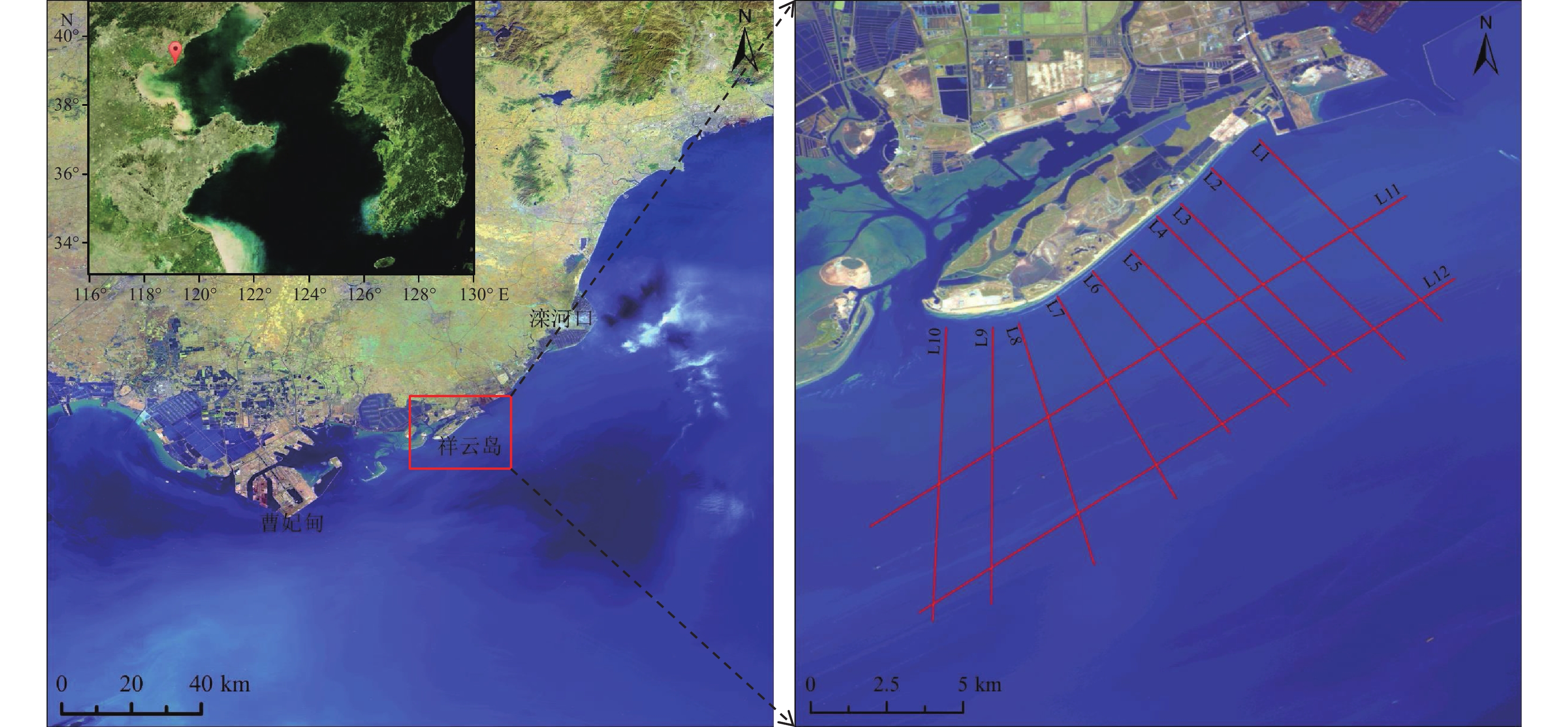
 下载:
下载:

